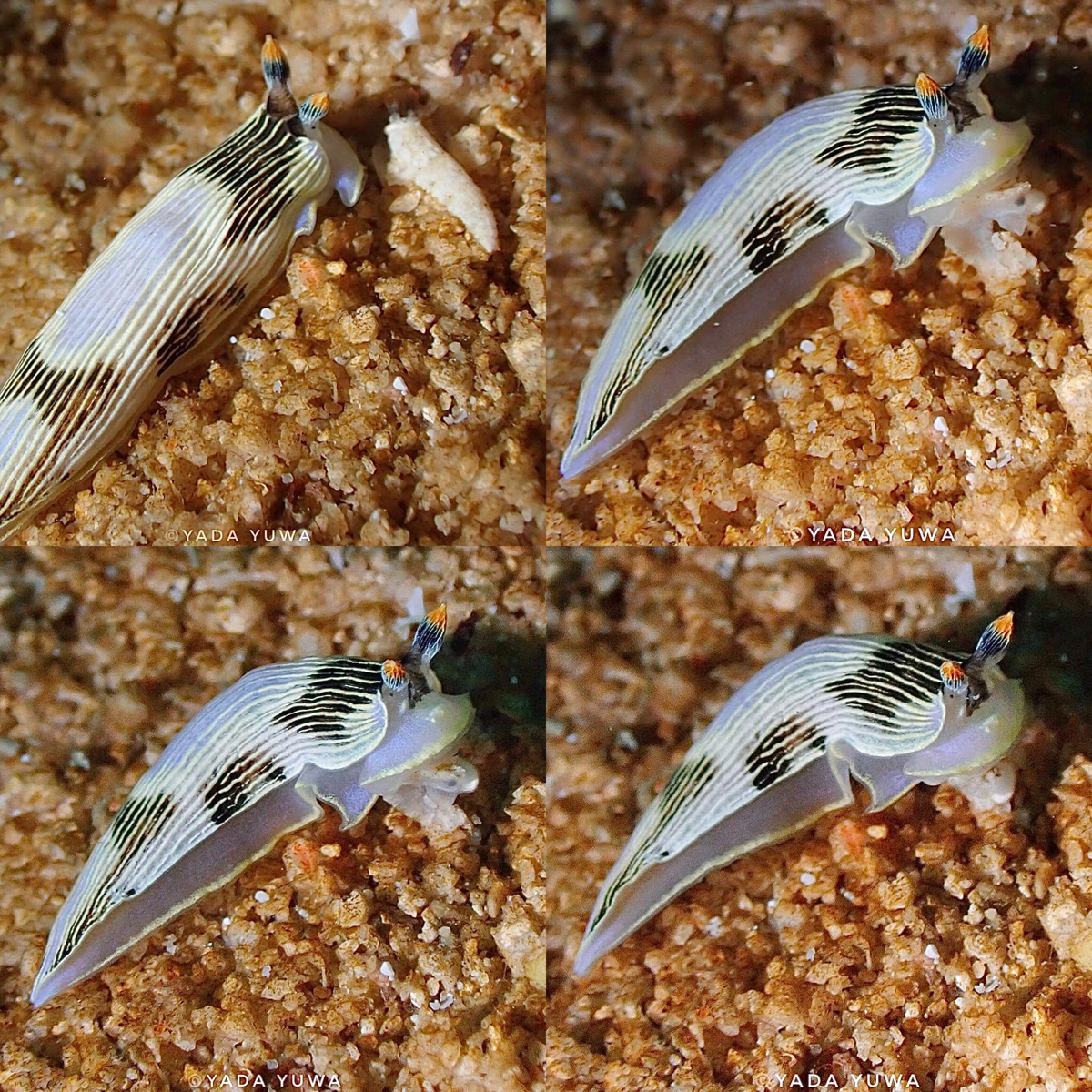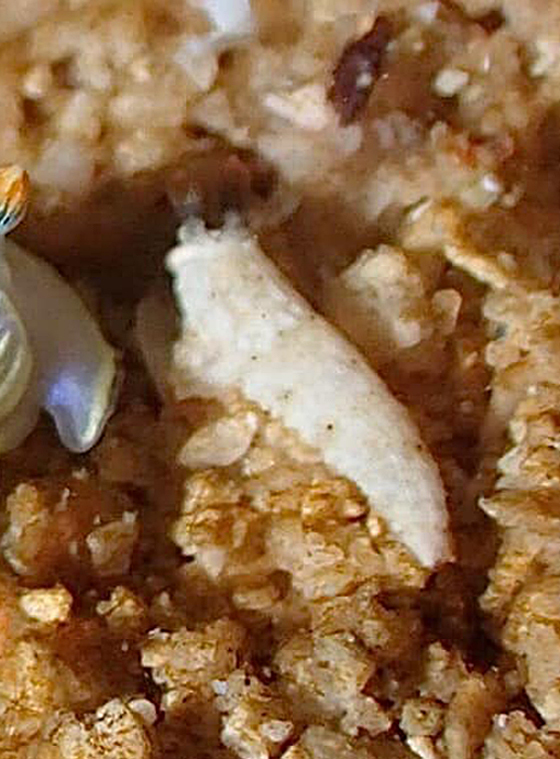 |
Image copyright Yada Yuwataepakorn
Koh Talu, Satun, Thailand

|
Dermatobranchus sp. 6 (undescribed)) Sometime ago, a dedicated conributor to the site Lawrence Neal brought to my attention a posting on Facebook that featured an observation by Yada Yuwataepakorn, the Webmaster of Sea Slugs Thailand (Facebook)! For you sluggers that are Facebook aficiandos, a visit is well worth the time! Wow - this is one of those critter observations that cannot be explained. The photos show some kind of aggressive encounter between two different arminid species, but why? The protagionist appears to be Dermatobranchus sp. 6 NSSI and the victim possibly Dermatobranchus sp. 17 in NSSI! So it appears that D sp. 6 is attacking and possibly devouring D sp. 17. The jury is out as to whether D sp. 6 actually consumed D sp. 17, but it is evident that was the intent at the onset! Dermatobranchus and Armina's all feed on soft corals, gorgonian corals and sea pens. So why would the larger, Dermatobranchus sp. 6 attack the smaller individual of a different species? It certainly was not a sexual encounter. Although the photos suggest an attack of the big guy on the smaller animal, we can't really see if the big guy really swallowed and ate it. It is possible that the smaller individual may have had the remains of a previous soft coral feast on its body, attracting the larger animal, who hunts by smell, with no eyes, only smelled a potential dinner for itself.
Michael Miller Webmaster San Diego, Calif 92113 Aug., 2021 Send Mike email at mdmiller1@cox.net |

Attention all you Sluggers, and you know who you are! The NSSI 2nd edition is now available in ebook PDF and book form . The hard back version will become available Nov. 1st. Both will cost $65 (individually). You will need to jump through a few hoops to get the electronic version as pdf distribution is protected by Adobe ID!! Please read the following to enable reading your electronic purchase! This new 2nd Edition is updated and reorganized, including 185 new species. Among other features, the new edition includes additional photographs of species, an identification key, and an up-to-date classification reflecting the latest evolutionary relationships. The Indo-Pacific represents the largest expanse of tropical ocean in the world, stretching from the Indian Ocean coast of southern Africa and the Red Sea to the central Pacific of the Hawaiian Islands, Easter Island and the Marquesas. This region supports the most diverse marine fauna of any place in the world for most groups of marine organisms. The nudibranchs and sea slugs are no exception to this rule; there are about 3,000 described species of these organisms in the world and at least 40% of these have been found exclusively in the Indo-Pacific tropics. This book illustrates 2,138 Indo-Pacific nudibranchs and sea slugs, including many undescribed species.
|

|
